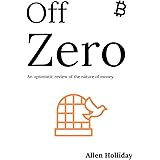Buying Bitcoin might seem complicated at first glance, but it’s actually a straightforward process once you understand the key steps. As the video above demonstrates, acquiring Bitcoin doesn’t have to be daunting. This guide builds on those essential points, offering a deeper dive into each stage to help you navigate your first purchase with confidence and security.
Choosing a Reputable Crypto Exchange
The very first step to buying Bitcoin is selecting a reliable cryptocurrency exchange. Think of an exchange as a digital marketplace where you can buy, sell, and trade cryptocurrencies. While many options exist, as mentioned in the video, their core function remains consistent: facilitating your purchase of Bitcoin. However, the critical factor is always reputation and security.
When you pick an exchange, prioritize established platforms with a proven track record. For users in the U.S., Coinbase is a widely recognized option, known for its user-friendly interface. Conversely, international users often consider platforms like Binance or Kraken, which offer a broader range of cryptocurrencies and features. Beyond these, research any exchange you’re considering for regulatory compliance in your region, strong security measures, and transparent fee structures. A quick search for reviews and any past security incidents can provide valuable insights.
Understanding and Completing KYC (Know Your Customer)
Once you’ve chosen an exchange and downloaded its app, you must complete the Know Your Customer (KYC) process. This isn’t just an arbitrary hurdle; it’s a regulatory requirement designed to prevent illicit activities such as money laundering and terrorism financing. By providing your personal information, the exchange verifies your identity, ensuring you are who you claim to be.
The KYC process typically involves submitting government-issued identification (like a driver’s license or passport), proof of address (such as a utility bill), and sometimes your social security number or tax identification number. It’s a mandatory step because without completing KYC, you will encounter limitations, most notably the inability to sell your Bitcoin or withdraw funds from the exchange. While it might feel intrusive, this verification protects both you and the financial system.
Funding Your Account to Buy Bitcoin
With KYC successfully completed, your next step is to deposit funds into your exchange account. This is the money you will use to buy Bitcoin. Most exchanges offer several convenient methods for funding your account, each with its own advantages and potential drawbacks.
- Bank Transfers (ACH/Wire Transfers): This is often the most cost-effective method, allowing you to link your bank account directly to the exchange. While generally having lower fees, bank transfers can take several business days to clear, meaning your funds won’t be immediately available for purchasing Bitcoin.
- Debit Cards: Using a debit card offers near-instant funding, making it a quick way to get started. However, exchanges typically charge higher fees for debit card transactions compared to bank transfers.
- Credit Cards: As highlighted in the video, using a credit card to buy Bitcoin is generally not recommended. Credit card companies often treat crypto purchases as cash advances, incurring higher fees and interest rates, alongside the exchange’s own processing fees. While it offers speed, the additional costs often outweigh the convenience.
- Other Methods: Some exchanges or peer-to-peer platforms might allow cash deposits at specific retail locations or even payments via third-party services. These methods can be more complicated or less secure, so sticking to direct bank transfers or debit cards is usually the simplest and safest approach for beginners.
Always review the funding limits and associated fees for each method on your chosen exchange before proceeding.
Reviewing Fees and Confirming Your Bitcoin Purchase
Every time you buy Bitcoin, fees are part of the transaction. These fees are how exchanges generate revenue for their services. Understanding the fee structure of your chosen platform is paramount to avoid any surprises. Exchanges typically charge various types of fees:
- Trading Fees: These are commissions charged when you execute a buy or sell order. They can be a percentage of your transaction value, and often decrease for higher trading volumes.
- Deposit Fees: While many exchanges offer free bank transfers, some may charge fees for certain deposit methods, especially for credit or debit card transactions.
- Withdrawal Fees: When you decide to move your Bitcoin off the exchange to a personal wallet, or fiat currency back to your bank, you might incur a withdrawal fee. This fee can be a flat rate or a percentage.
- Network Fees: When transferring Bitcoin, a small fee (called a “miner fee”) is paid to the Bitcoin network validators. While not always directly charged by the exchange, it’s often passed on to the user, especially during withdrawals.
Before confirming your purchase, always double-check the final amount of Bitcoin you will receive after all fees have been deducted. This transparency ensures you know exactly what you’re paying for. Once you’re satisfied with the terms, confirm the purchase, and congratulations – you now own Bitcoin!
Self-Custody: Moving Bitcoin to Your Digital Wallet
After you successfully buy Bitcoin on an exchange, you face a crucial decision: leave it on the exchange or move it to a personal digital wallet for self-custody. Leaving Bitcoin on an exchange offers convenience, as it’s readily accessible for trading or selling. However, this also means you don’t fully control your assets; the exchange holds your private keys.
Self-custody, on the other hand, means you hold the private keys to your Bitcoin, giving you complete control and responsibility. Many seasoned Bitcoin holders advocate for self-custody following the mantra “not your keys, not your crypto.” This approach significantly reduces counterparty risk—the risk that a third party (like an exchange) might be hacked, go bankrupt, or freeze your funds.
If you opt for self-custody, you’ll need a crypto wallet. There are several types:
- Hardware Wallets: These are physical devices specifically designed to store your private keys offline, making them highly secure against online threats. Popular examples include Ledger and Trezor. They are considered the gold standard for long-term storage of significant amounts of Bitcoin.
- Software Wallets (Hot Wallets): These are applications that run on your computer or smartphone. While more convenient for frequent transactions, they are connected to the internet, making them potentially more vulnerable to hacking attempts if your device is compromised. Examples include Electrum, Exodus, or mobile apps from various providers.
Transferring Bitcoin from an exchange to your personal wallet typically involves entering your wallet’s receive address on the exchange’s withdrawal page and confirming the transaction. Always double-check the address to avoid sending your Bitcoin to the wrong place, as transactions on the Bitcoin network are irreversible.
Essential Security Measures: 2FA and Seed Phrase Management
Securing your Bitcoin goes beyond simply owning it; it involves robust security practices for both your exchange account and your personal wallet. Two critical components are Two-Factor Authentication (2FA) and the meticulous management of your seed phrase.
Two-Factor Authentication (2FA): This adds an extra layer of security to your exchange account. Instead of just a password, 2FA requires a second piece of information—typically a unique, time-sensitive code sent to your phone or generated by an authenticator app (like Google Authenticator or Authy). This means that even if a hacker obtains your password, they still cannot access your account without this second factor. Prioritize using authenticator apps over SMS-based 2FA, as SMS can be vulnerable to SIM swap attacks.
Securing Your Seed Phrase: If you’re using a hardware or software wallet, you will be given a “seed phrase” (also known as a recovery phrase or mnemonic phrase). This is a sequence of 12 or 24 words that serves as the master key to your Bitcoin. Anyone with access to your seed phrase can access and control your funds. Losing it means permanent loss of your Bitcoin if your wallet is ever damaged or inaccessible. Therefore, securing your seed phrase is paramount:
- Write it down: Physically write your seed phrase on paper or engrave it on metal.
- Multiple copies, secure locations: Create several copies and store them in separate, secure, and private locations (e.g., a fireproof safe, a safe deposit box).
- Never store digitally: Avoid taking photos, saving it on your computer, or emailing it to yourself. Any digital copy is a potential security vulnerability.
- Keep it secret: Never share your seed phrase with anyone, under any circumstances. No legitimate service will ever ask for it.
By diligently enabling 2FA on your exchange accounts and meticulously securing your seed phrase for your personal wallets, you establish a strong defense for your Bitcoin against unauthorized access. These practices are fundamental to responsible Bitcoin ownership and will provide peace of mind as you embark on your journey into digital assets.







